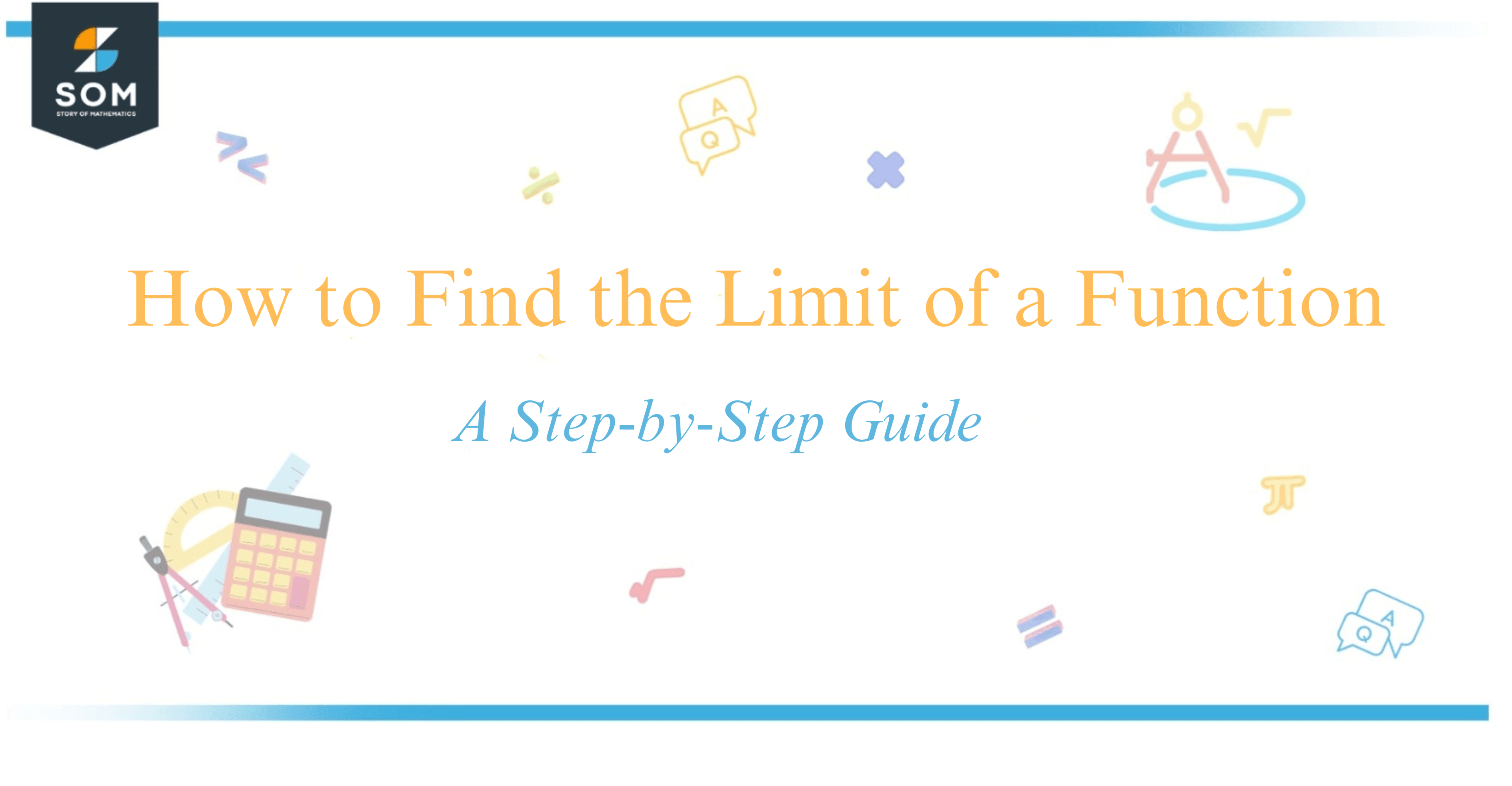JUMP TO TOPIC

To find the limit of a function, you should first understand what a limit is. In calculus, a limit captures the value that a function approaches as the input approaches a certain point.
For example, if we consider the function $ f(x) = \frac{1}{x}$, finding the limit as ( x ) approaches 2 involves substituting 2 into the function to get $f(2) = \frac{1}{2}$.
This process of direct substitution works well when the function is continuous at the point of interest.

However, not all functions are that straightforward, and sometimes direct substitution isn’t possible, especially when it results in indeterminate forms like $ \frac{0}{0} $ or undefined expressions.
In those cases, other techniques like factoring, rationalizing, or using special limit laws are necessary to find the limit. Understanding how to manipulate functions algebraically and using graphs to interpret the behavior as values approach a certain point can often provide insight into the limits.
For real engagement with calculus, I’ll show you through relevant examples why limits are not just theoretical concepts but also practical tools. Stay with me as we explore the simplicity and beauty of approaching sometimes seemingly complex limits.
Steps for Calculating Limits of a Function
When tackling the concept of limits in calculus, I follow a systematic approach to make sure I understand the behavior of functions as they approach a specific input. Here’s a breakdown of typical steps I would take:
Direct Substitution:
I start by directly substituting the point into the function, if possible. For example, if I’m looking for the limit as ( x ) approaches 3 of $f(x) = x^2$, I simply plug in 3 to get $f(3) = 3^2 = 9$.Factorization:
If direct substitution yields an indeterminate form like $\frac{0}{0} $, I then try factoring. For instance, with $f(x) = \frac{x^2-4}{x-2}$, I can factor the numerator to $\frac{(x+2)(x-2)}{x-2}$ and cancel out the common terms.Conjugate Multiplication:
For functions involving square roots, multiplying by the conjugate can help. For sqrt functions like $ f(x) = \frac{\sqrt{x+4}-2}{x-4} $, I multiply numerator and denominator by $ \sqrt{x+4}+2 $.One-sided and Two-sided Limits:
I consider one-sided limits when approaching from just one direction (either from the left or the right). For two-sided limits, the left and right limits must be equal for the limit to exist.L’Hôpital’s Rule:
If after simplification I end up with $\frac{0}{0} $ or $ \frac{\infty}{\infty} $, L’Hôpital’s Rule is a powerful tool. It states that under these conditions, the limit of ( f(x)/g(x) ) as ( x ) approaches a value can be found by taking the limit of their derivatives instead.Tables and Graphs:
Creating a table of values or sketching a graph of the function helps visualize how values of ( f(x) ) behave as ( x ) approaches a particular point. This is especially useful for complex functions or when approaching infinity.Special Functions:
For trigonometric functions like sin or cos, I use trigonometric identities. For example, the limit of $ \sin(x)/x $ as ( x ) approaches 0 is 1.
No method is foolproof, and sometimes it’s necessary to combine techniques or approach a limit from a different angle.
Moreover, a calculator may assist in checking my work or dealing with particularly stubborn problems. With these strategies in mind, calculating limits becomes a clear and manageable task.
Special Types of Limits
When I explore the concept of limits in calculus, I encounter special types that stand out due to their unique properties.
One such example is the infinite limit, which occurs when the value of a function increases or decreases without bounds as the input approaches a certain point.
In this scenario, the function does not approach a finite number but rather heads towards positive or negative infinity. This is often related to finding a vertical asymptote, a line the graph of a function approaches but never touches or crosses.
One-sided limits are another interesting type. These come into play when I look at the behavior of a function as the input approaches a particular value from one side (from the left or the right) only. For instance, I might look at:
- The right-hand limit, denoted as $\lim_{{x \to a^+}} f(x)$
- The left-hand limit, denoted as $\lim_{{x \to a^-}} f(x)$
A two-sided limit, which is the typical limit I look at, such as $\lim_{{x \to a}} f(x)$, considers the approach from both sides. If both one-sided limits exist and are equal, then the two-sided limit exists at that point.
When dealing with the limits at infinity, I consider the behavior of a function as x approaches infinity, especially with rational functions where the degrees of the numerator and denominator polynomials determine the end behavior of the graph.
To approximate limits, I sometimes use graphical or numerical approaches, especially when an analytical method is difficult to apply.
Here’s a simple table summarizing the behavior of rational functions as x approaches infinity, depending on the degrees of the numerator (N) and denominator (D):
| N < D | N = D | N > D |
|---|---|---|
| $\lim_{{x \to \infty}} = 0$ | $\lim_{{x \to \infty}} = \frac{\text{leading coefficient of N}}{\text{leading coefficient of D}}$ | $\lim_{{x \to \infty}} = \infty$ or $-\infty$ |
Understanding these special types of limits has greatly enhanced my ability to analyze functions and their behavior, and it enables me to draw more accurate graphs and make better approximations.
Applications and Tools
When I approach the concept of limits in mathematics, I utilize both graphing calculators and computer software as essential tools.
These tools are valuable for visualizing the behavior of functional values as they near a specific point. For example, if I’m dealing with rational functions, a graphing calculator can quickly show asymptotic behavior or discontinuities.
In the realm of computer software, programs like Symbolab or Mathway offer sophisticated limit calculators.
These platforms empower me to input a function, and they handle the complex computations to find the limit, particularly useful when working with challenging indeterminate forms. Here’s a simple structure to demonstrate using these tools:
| Tool Type | Purpose | Example Usage |
|---|---|---|
| Graphing Calculator | Visualizing function behavior near a point | Graphing $ f(x) = \frac{1}{x} $ |
| Computer Software | Computing limits, especially complex scenarios | Finding $ \lim_{x \to 0} f(x) $ |
I also draw on the knowledge of mathematicians who’ve developed a systematic problem-solving strategy.
One of these strategies includes the use of a conjugate to rationalize the numerator or denominator to resolve limits involving indeterminate forms like $ \frac{0}{0} $.
It’s important to note that while these tools are powerful, they are best used as a complement to a solid understanding of the underlying principles of limits.
In my experience, combining the intuitive understanding of limit behavior with technological aids yields the most reliable results. This reinforces my problem-solving abilities and equips me with a versatile skill set in mathematical analysis.
Conclusion
In learning how to find the limit of a function, we’ve explored several methods. I’ve demonstrated the importance of approaching the problem with clarity—applying rules and notations correctly.
Remember, using a table of values and graphs can be powerful tools in estimating limits, especially when the limit is not immediately apparent from the function’s equation.
When one-sided limits are introduced, I’ve shown that they help in understanding the behavior of functions as they approach a point from just one side.
This is crucial when dealing with functions that aren’t symmetric around a point. You’ve also seen that the Limit Laws can simplify complex problems by breaking them down into more manageable pieces.
In math, precision is key, so ensuring your use of limit notation—expressed as $\lim_{x \to c} f(x) = L$—is accurate, and assists in clear communication of your solutions.
It’s been my goal to guide you toward a solid understanding of limits in calculus and set a foundation for delving into more advanced topics like continuity and derivatives.
Whether you’re estimating limits using tables or applying Limit Laws, the journey in calculus is always unfolding.
With a strong base in limits, you’re now better equipped to explore the fascinating world of calculus and all the patterns it helps to unravel in the universe around us. Keep practicing, and remember, mastering limits is a stepping stone to the broader adventures in analysis that lie ahead.
